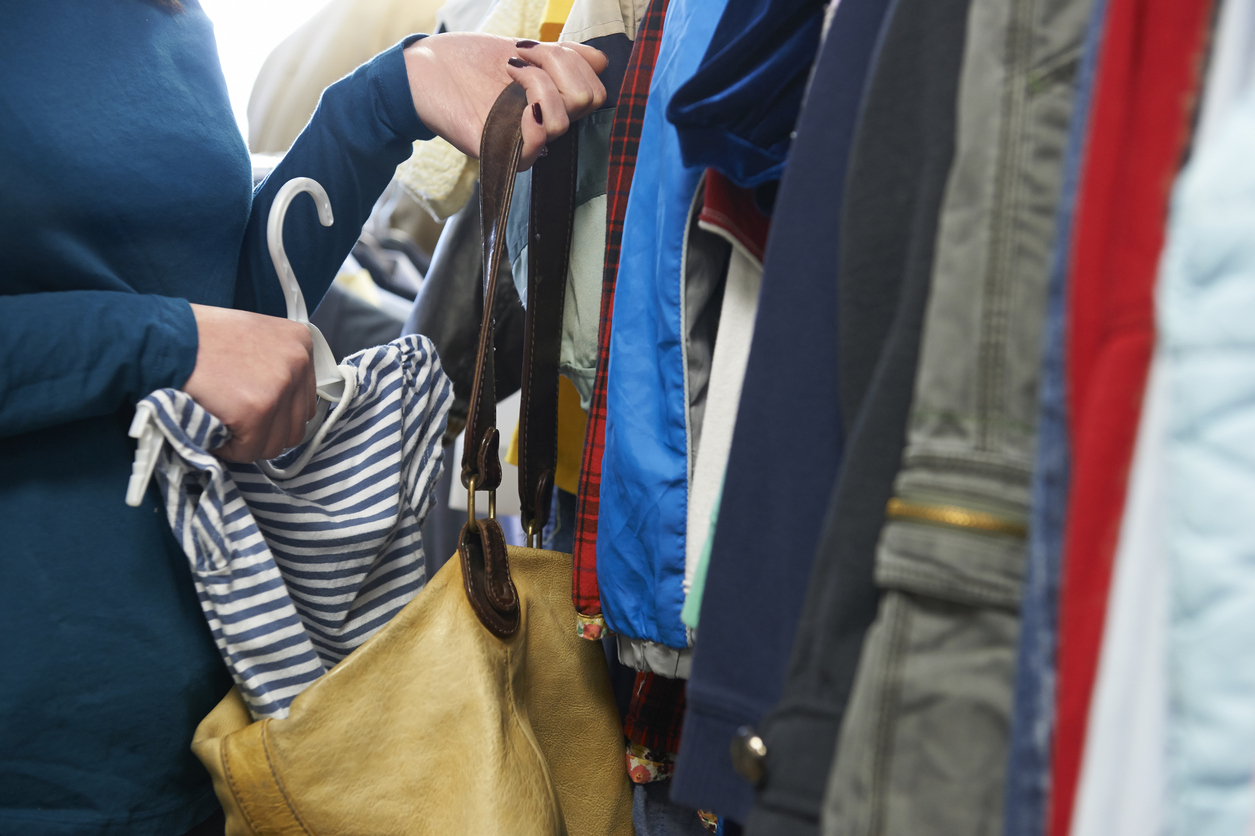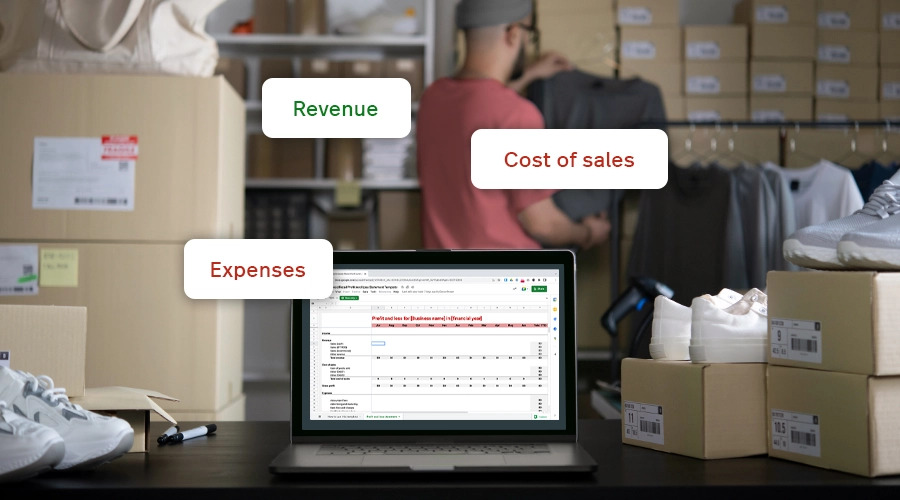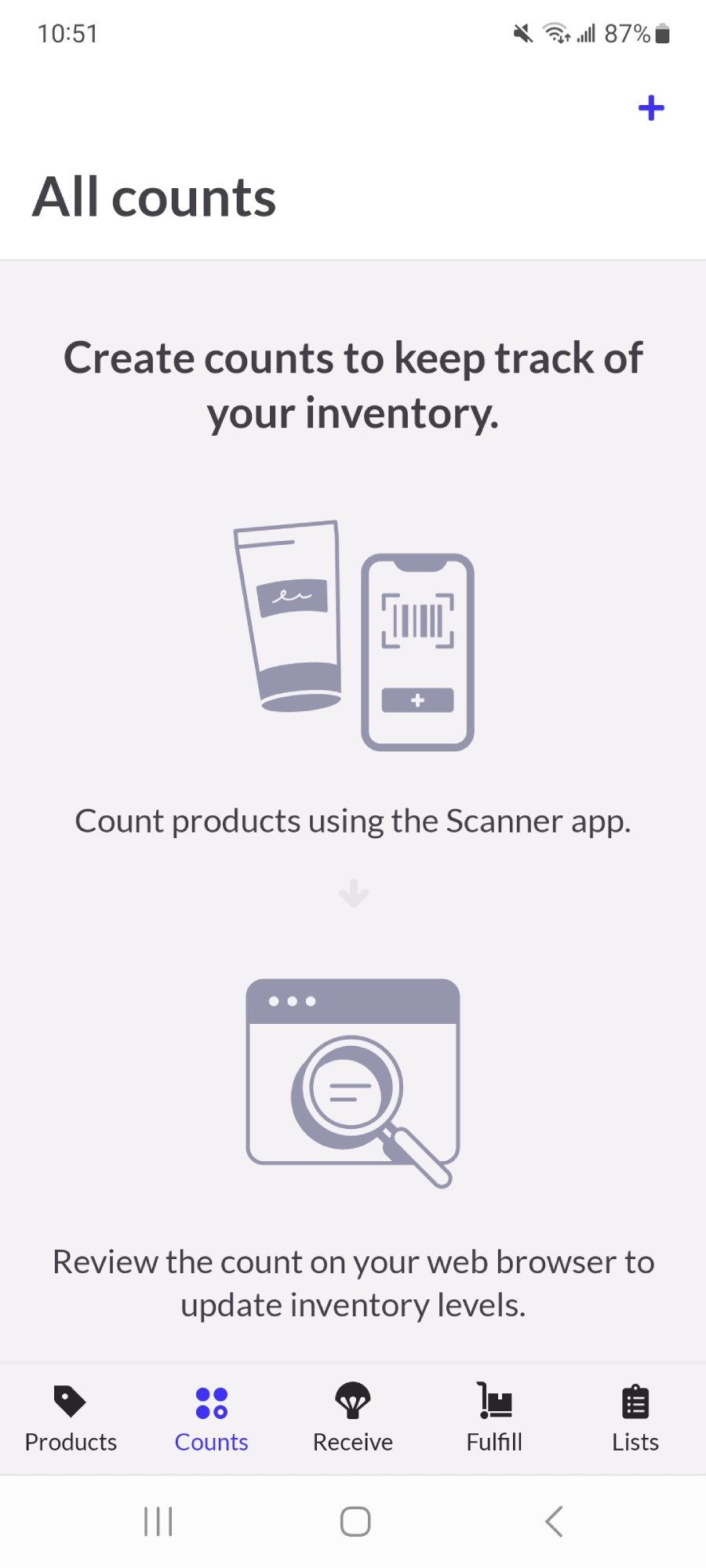
Shoplifting, theft and fraud are big problems for retailers. To give you some perspective, the National Retail Federation found that inventory shrinkage, which includes theft, cost retailers an estimated $112.1 billion in losses in 2022. It’s crucial retailers learn how to spot a shoplifter and stop them without negatively impacting legitimate customers.
Let’s address the challenge of shoplifting and loss prevention head-on. In this post, you’ll learn the following:
- What is shoplifting?
- How to spot a shoplifter
- Employee theft
- Theft prevention techniques
Profit and Loss Template
Examine the financial health of your business by highlighting exactly how much revenue is being generated versus what’s being spent.

What is shoplifting?
Shoplifting, or retail fraud, is the removal of merchandise from a store without paying for that merchandise. Having the intent to steal also qualifies as shoplifting. Intent to steal includes things like:
- Changing a price tag
- Removing security tags or other theft-prevention devices
- Putting merchandise in your pockets or bag
- Taking merchandise out of its packaging and concealing it
To spot a shoplifter and prevent them from stealing, however, you need to train your employees to keep an eye out for the telltale signs on your sales floor.
How to spot a shoplifter: shoplifting signs
Thieves can be any race, gender or background. There is no standard profile, but there are red flags to look out for. It’s important to note that red flags do not imply guilt and most people in your store have no intention of stealing from you.
Treating shoppers as guilty until proven innocent will drive legitimate customers away and lower the overall impression of your business in your community. Always assume positive intent with people in your store and use our loss prevention techniques to minimize the impact shoplifting has on your inventory shrinkage.
Instead of profiling customers, set up systems to prevent bad actors who show them from succeeding in the first place.
Past offenders
While shoplifters don’t all have the same appearance, you (or other retailers in your area) may already be aware of specific individuals who have or have tried to shoplift from your store.
If you’ve identified an offender after they’ve committed the act, use your security camera footage to capture an image of their face and hang them up in your employee break room so they can keep an eye out.
Carrying big bags
If a shoplifter wants to steal as much merchandise as possible, they need something to store it in. Big bags are great for concealing stolen goods.
The vast majority of shoppers with big bags will have no ulterior motives, so no one should be singled out for carrying a bigger bag than usual. Instead, to protect your store while staying fair, implement a flat no-bags policy where customers must drop off big and small bags (and backpacks and carts) at the front counter on entry.
Entering in groups
Not all shoplifters are lone wolves. Shoplifters often work as a lifter or distractor as well. The distractor’s job is to distract sales associates by asking them time-consuming questions: finding a specific item, whether or not they have a product in stock, etc. The lifter is the person doing the actual shoplifting. While the distractor keeps sales associates occupied, the lifter steals merchandise.
The best way to handle groups—shoplifters or otherwise—is to make sure there’s always enough staff on the floor. At least two sales associates should be scheduled at all times, and more during busy hours. Use POS reporting, like Lightspeed Insights’ sales by hour of the day report, to determine when you need more people on the floor.
Tools of the trade
While it’s good to know the basics and have a watchful eye, never underestimate how subtle shoplifters can be; some of them are professionals. Here are a few of the more advanced tricks shoplifters use:
- Razor blades: Some shoplifters carry thin, sharp blades (like razor blades) and use them to remove alarm tags once they’re safely in the changing room.
- Booster bags: Lining a bag with tin foil prevents alarm tags from setting off the detectors around the store exits. It’s an easy way for thieves to quickly load up on merchandise and leave the shop undetected.
Countering tool use is much like countering groups with ulterior motives. Always have enough sales associates on the floor to keep an eye on (and help out) everyone in the store.
Also consider extra security measures for expensive products, such as locked cabinets or metal cables, to make common theft tools less useful.
Watching the staff and security and loitering near store exits
Some shoplifters will loiter near exits, waiting for sales associates to become busy before making off with whatever they’ve lifted. They’ll be more interested in tracking employees around the store instead of checking out the merchandise.
This is because while detectors at exits help deter shoplifters, if no one is watching, they can be bypassed without anyone noticing.
In addition to installing detectors, have managers position a sales associate around exits. Their presence will help deter shoplifters by making it clear someone is keeping an eye out. They’ll also enhance your customer service for legitimate shoppers, as they’ll be able to greet people as they walk in and address any concerns (or reinforce positive experiences) as they leave.
Occupying dressing rooms for a long time
Sometimes shoplifters will head to a dressing room, where they’ll remove the tags on their to-be-stolen merchandise and hide it in a bag or on their person. This can take a while, so they might be in the dressing room a long time.
On the other hand, sometimes people will take a long time to put things on, so you can’t always spot a shoplifter by how long they take to get dressed. There’s plenty of legitimate reasons to need some extra time, after all.
Instead of enforcing time limits on dressing rooms or taking away dressing rooms altogether, keep a sales associate assigned to the dressing rooms and have them use a number system. When shoppers want to try something on, your employees count how many items they have and write it on the door or hang a numbered tag. Then, have employees count items again when shoppers leave the dressing rooms.
How to spot a shoplifter on the inside: employee theft
Also known as internal theft, employee theft is when an employee steals from the organization where they work. While not what you might think when you hear “shoplifting,” employee theft can cost you more—up to three times more, according to the NRF.
So, what can retailers do to prevent employee theft?
Inventory tracking
Many small businesses don’t use technology to track their inventory. Today, manually tracking inventory is simply insufficient and can result in overstocking. Supply Chain Digest estimated that US retailers are sitting on approximately $1.43 in inventory for every $1 of sales they make.
When the inventory in your stock room and on your sales floor isn’t accurate, dishonest employees can take advantage of their employer with little fear of consequences.
To prevent the risk of overstocking, retailers need to invest in a retail point of sale with comprehensive inventory management capabilities. Without one, they risk increased shrinkage—or worse, only becoming aware of the discrepancy during their quarterly cycle counts.
Barcodes can also help retailers avoid shrinkage because they help efficiently track inventory with a handheld scanner. If you don’t have one, you can use Lightspeed’s free barcode generator instead.
Generate barcodes in just a few clicks
Use Lightspeed’s free barcode generator and keep tabs on your inventory.
Open door policy
Employees are more likely to steal if they feel upset or resent their place of work. Keeping a dialogue open with them can help smooth over any frustrations before they boil over into sabotage like theft.
Have managers conduct regular performance reviews and hold meetings where employees can speak up about any concerns. Treat employees’ jobs like a career—give them a path to promotion and let them know you take their hard work seriously. Implement and communicate policies that protect employees against retaliation if they have complaints against their manager or coworkers.
Stop shoplifters: theft prevention techniques
So you know how to spot a shoplifter, and what to do about the signs. But that’s not all you can do. You can take further measures to prevent theft by employing the following techniques.
Merchandising security
If you have high-value products in your retail stores like laptops, mobile phones or luxury goods, merchandising security is a great way to allow consumers to pick up and test your products while keeping them tethered to your display furniture.
Some retailers use a security stand that mounts on top of their furniture and allows them to display phones, watches, tablets and cameras while keeping them secure and tethered.
There is a wide range of merchandising security equipment available, from magnetic holders, wired grip holders and others. You can choose which ones are best suited to your products depending on the shape, size and value of the products you’re safeguarding.
Some merchandising security devices come with built-in chargers so your displayed products are always charged to ensure a great customer experience. You can find these devices (as well as the one above) in electronic stores as well as general retailers like Amazon.
Physical locks and cables also make it harder for thieves to just pinch a product from your shelves. Many retailers put mirrors all around their store to improve the visibility of displayed products, such that thieves become more conscious of their acts since they feel that they are being watched. Mirrors are inexpensive non-technical loss prevention devices that can be very effective.
Anti-theft signage
You need to tell customers they’re being watched and what the consequences of shoplifting can be. Through installing anti theft signage across the entire store, retailers instantly warn potential thieves from acting unlawfully.
Display locks
In some cases, you may want to prevent people from taking products from a display. Maybe the merchandise is valuable or prone to theft. Whatever the case, you can keep them secure with display locks such as peg hook devices.
Peg hook locks can prevent sweep theft. You attach them to the hook of your display and they can only be unlocked using a magnetic removal tool.
Another option is to use lockable glass or acrylic displays. These are clear retail display cases that can showcase your products so shoppers can still view them.
Perfect for high-value items like jewelry, these cases can typically be unlocked with a key, so shoppers would have to approach a staff member if they want to touch an item in the case.
Cameras and video analytics
Surveillance cameras at key points around your retail store, complemented by video analytics software can be a fantastic theft prevention formula. The software identifies whenever any kind of suspicious movements occur, like if a customer walks out the door without paying, You’ll instantly get an alert if this happens.
With information on demographics, incoming and outgoing people count, and heatmaps for more advanced visitor analytics, you can pinpoint the likelihood of theft with greater accuracy.
If you use cameras with facial recognition technology, it becomes easier to identify ‘known’ thieves, by matching them against an existing database of criminals or thieves supplied to you by the police.
Electronic Article Surveillance (EAS)
By attaching security tags to your products, retailers can trigger an alarm if a shoplifter walks through the electronic sensors at the exit gates with a product with the tag still on.
There are many types of EAS devices you can use like tags, labels, antennas and spider tags. They use a combination of radio frequency, electromagnetic technology, sensors and metal detectors to prevent theft. The best ones are the ones that cause the minimum number of false alarms.
Educational materials for theft prevention
One of the best ways to curb theft is through education. Keep your team well-informed of the latest loss prevention best practices so they can help secure your store.
You also want to educate your staff and contractors about their code of conduct, so they’re aware of the consequences they need to face. By making them take eLearning programs and induction modules when they join your company, you set the right foundation for controlling theft from the start of their tenure.
Smart inventory management tools
It is important to keep in mind that shrink encompasses more than just theft. Damage, miscounting and faulty bookkeeping all contribute to shrink, and there is some debate on just how much shoplifting contributes to the problem. If you’ve implemented other anti-theft measures and are still seeing significant shrinkage, you might be dealing with more than just shoplifting.
One of the most effective ways to prevent inventory loss is frequent inventory management with a point of sale. By watching your inventory carefully through regular stock counts and monitoring discrepancies, many retailers dramatically decrease shrink at their stores. Using smart barcode scanners, or easy-to-use apps like Lightspeed Scanner, to do stock takes to accurately account for your inventory levels is helpful.

“The stocktake process for us used to involve a lot of spreadsheets, and this wasn’t ideal because it leads to mistakes. Now with Lightspeed, people can use devices to scan easily and update the stock record.”
Paul Stephens, Head of Data & Technology, Neal’s Yard Remedies
Another key measure retailers use is by monitoring ‘user permission levels’ of their staff for operating the POS system. Lightspeed allows you to set different permission levels so only key employees can edit data on your system.
Take action to prevent shoplifting
While there’s no way to entirely stop shoplifters and theft, the right tactics, training and technology can help you minimize your losses from inventory shrinkage.
Use the tips and resources above to effectively spot shoplifters, prevent them from stealing, prosecute offenders within your rights and keep your retail business safe.
And if you’re in the market for an inventory management system that helps you track stock to reduce shrinkage (and optimize your shelves with comprehensive data and reports), you’re in luck. Lightspeed might be exactly what you need. Why not watch a demo and see for yourself?

News you care about. Tips you can use.
Everything your business needs to grow, delivered straight to your inbox.



